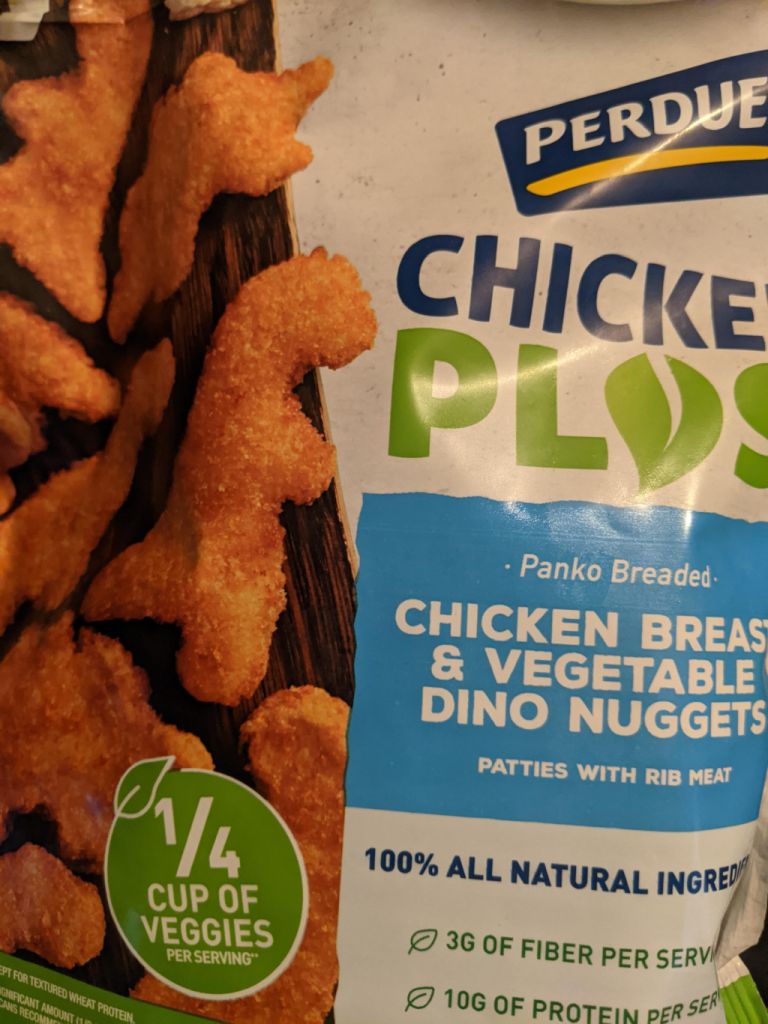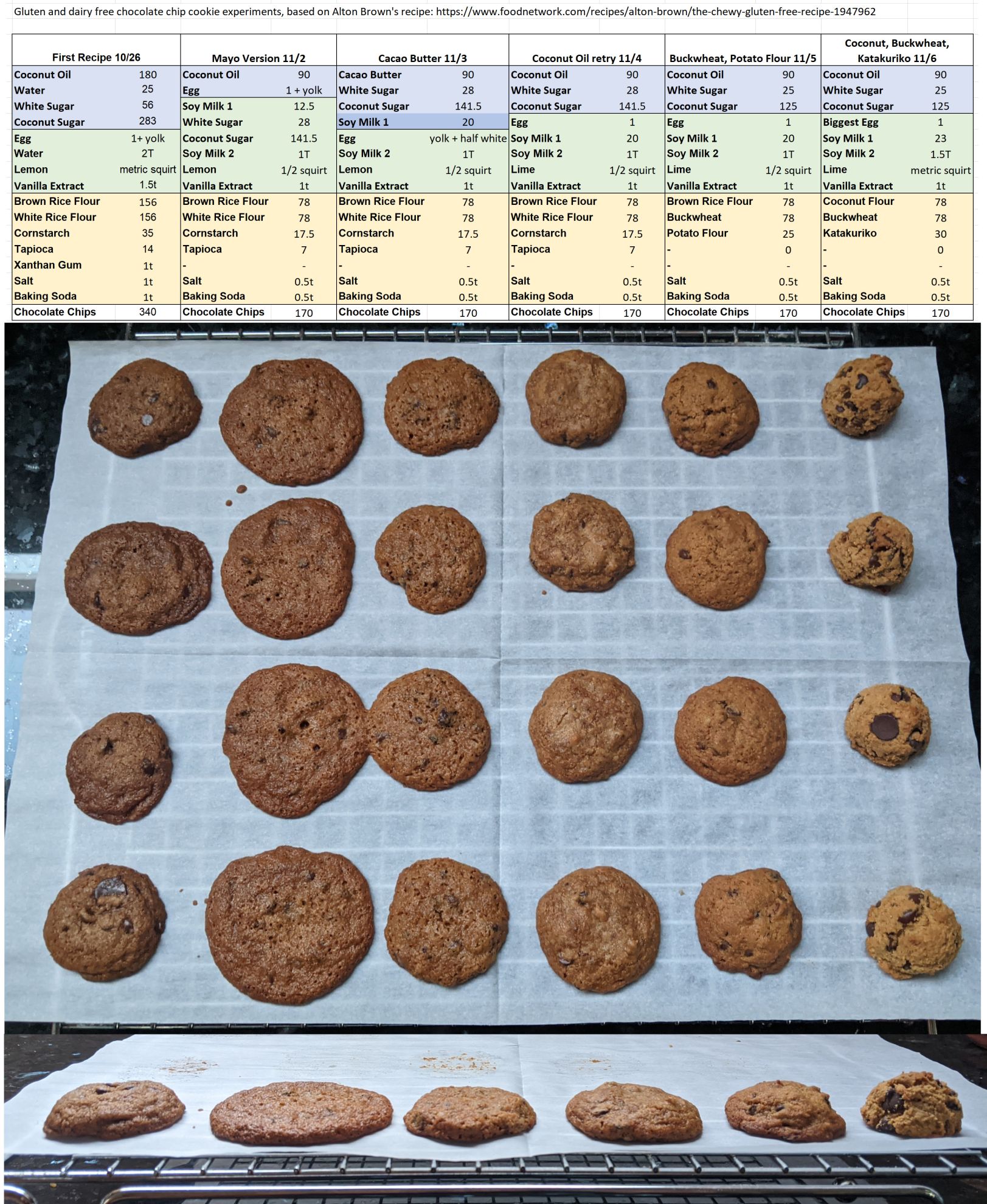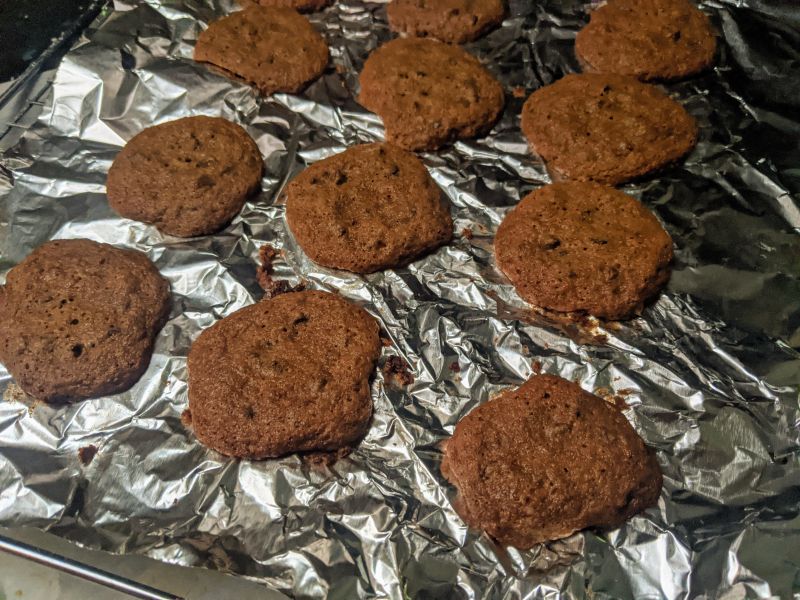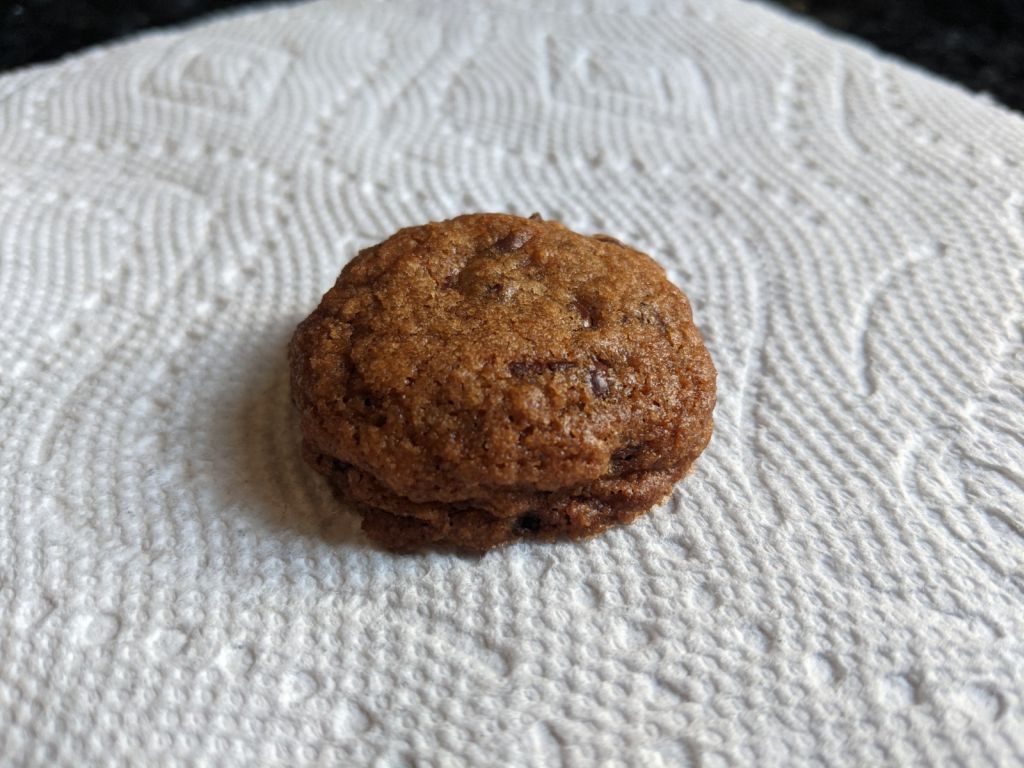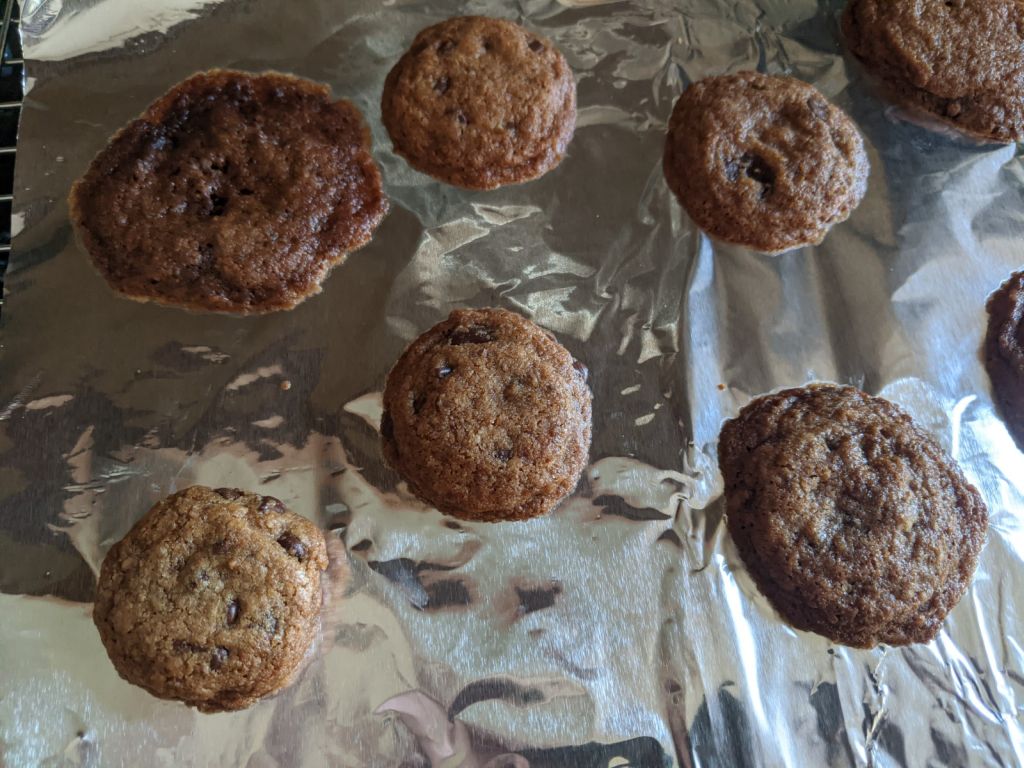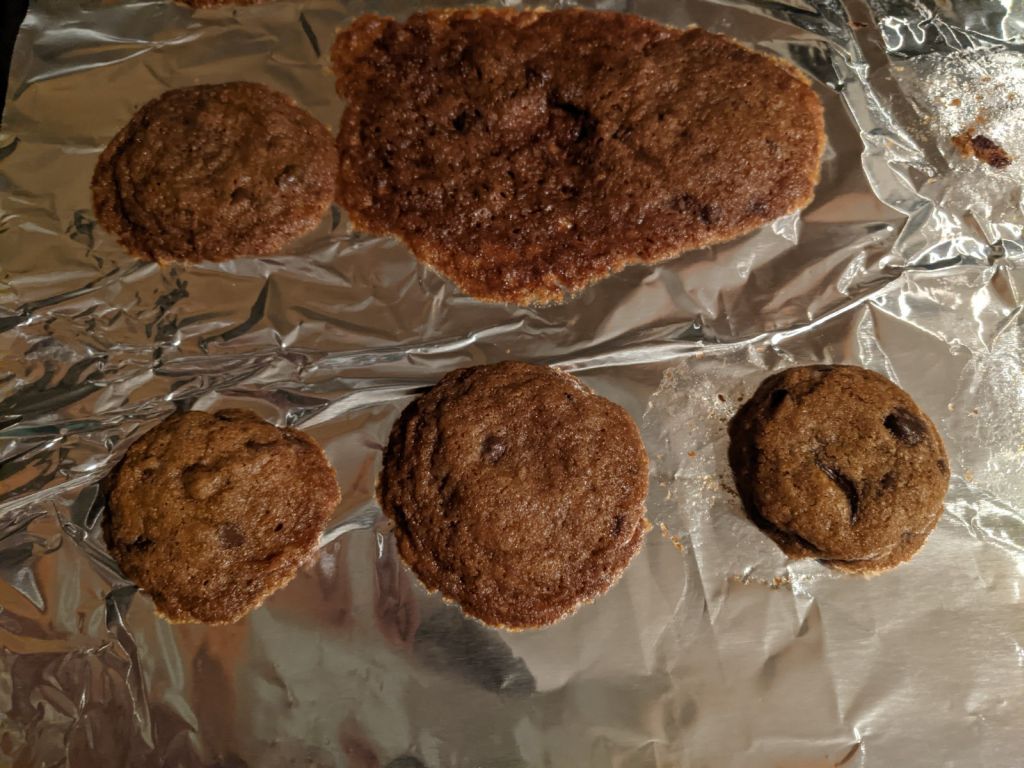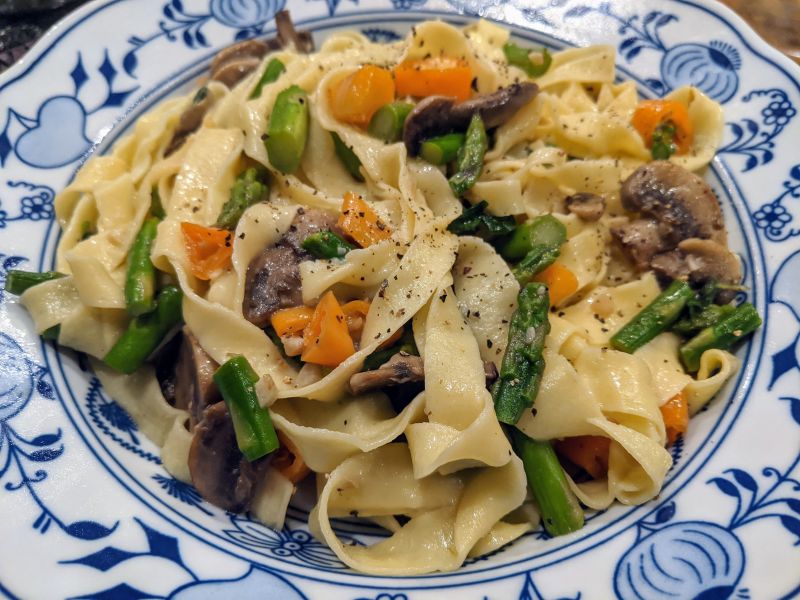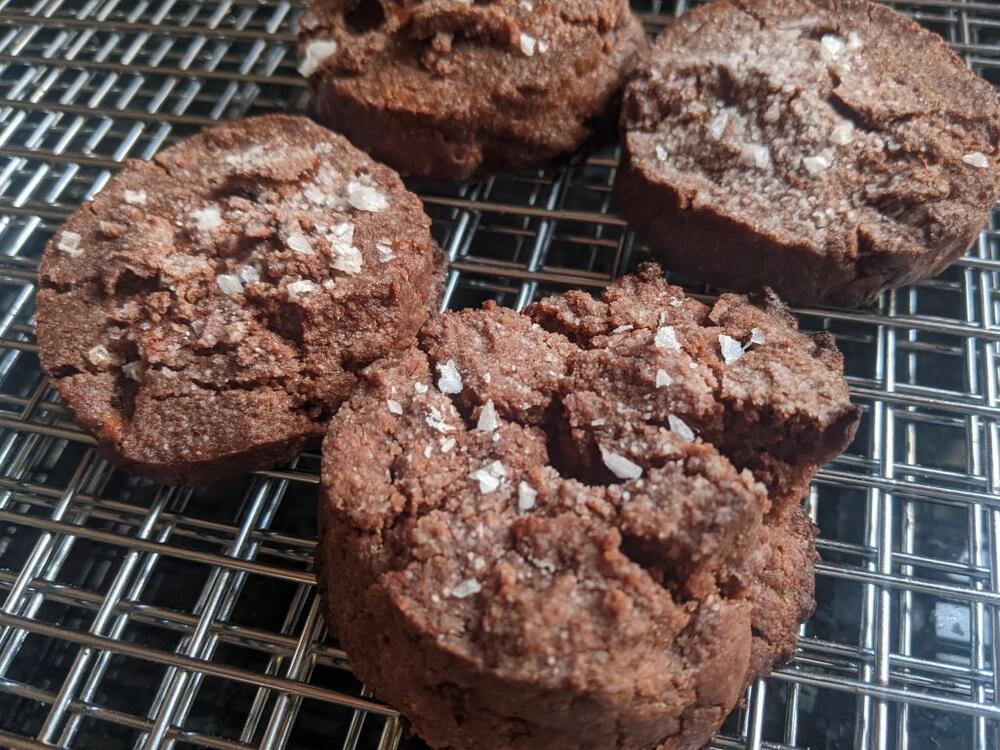
jedovaty
participating member-
Posts
444 -
Joined
-
Last visited
Content Type
Profiles
Forums
Store
Help Articles
Everything posted by jedovaty
-
Red food coloring questions, pink pralines/praline roses
jedovaty replied to a topic in Pastry & Baking
Hi, I made at least two terminology flaws in my post, my sincere apologies. First, I totally forgot there are multiple definitions to praline. These are not the candy brittles where you pour out a caramel sauce with the nuts and let harden, but rather, toss the nuts in a caramel until the sugar crystalizes and the nut/sugars all become their own entities. Let this cool, and repeat. Here's an example, and just your luck, this guy is making exactly what I plan to make (I will follow his technique, but may make changes to the recipe). "High heat" - anything over boiling is high heat to me, however, I realize now that is wrong. What I meant, is, will the color stand up to the temps of sugar candy making, and baking temps of 350-450? Or maybe a better question to ask, what is the upper temp limit for carmide/cochineal coloring before it loses its color? There are recipes that bake the pralines into breads and brioches, and that's ultimately my goal (look up "pink bread" or "praluline"). Thanks again for your time! -
Hi! My secret goal is to make pink pralines (aka rose pralines) both for eating and baking. The recipes call for red food coloring. My only experience with food coloring was a few years ago, when I attempted to make various pastries extra hippie with vegan and natural ingredients. The homemade beetroot powder was an epic failure, which looked great until baked (made the macarons look like desiccated dog doo, you know, the kind that gets left out in the grass for months). In other words, I don't know anything about food coloring and research so far has not addressed my questions. Questions: 1. will cochineal-based food coloring hold up in high heat of making pralines, and then ultimately in baking? 2. would someone be kind enough to point me to a carmine/cochineal-based food coloring? I can't seem to find it after about 30 minutes of google searching, everything is about safety or how to make your own (which I will do if necessary) 3. what is considered an upscale brand for food coloring (doesn't matter if synthetic or natural) ? 4. how would people in the 1800s have colored the pralines pink, since that's when these things were presumably first created? Thanks for your time
-
I have a 10+ year old bamix. 150w. I actually exchanged the first one I bought for the one with the long shaft. The bamix is used for making mayo/aioli, blending soups quickly, puree canned tomatoes, and I have the small "slicey" attachment that I use to make pesto (doesn't look like the new style, however, it's different). I tried making an ice smoothie with the bamix, didn't work. That said, I'm curious about this sharper blade.. I see it is for meats and veggies, but appears to be unavailable wherever I check. Willing to share a source? Also, I've read your comments, and happy you and the gf are making it work. FWIW, my ex-gf had one of those ninja things from costco that had a special mug attachment to the base, which worked similar to a magic bullet. It had no issues with rolled oats in smoothies, did not try with steel cut or groats, however. Easy to clean up, etc. Her boss had a magic bullet at work and used it for peanut butter and various other ingredient smoothies. Never talked to him about it, however, I just recall she mentioned it once.
-
What do you all think of wolf cookware? Someone I know is updating their kitchen, doesn't care for stainless cookware, and wants to gift me their entire set. It kind of looks like rebranded all-clad? Seems like the line is NLA. https://wolfgourmet.com/store/cookware
-
@Anna N Thanks, their website where I pulled the video from. @jimb0 They talk about anodized aluminum, but call the coating "proprietary" and a "water-based release coating". Bunch of marketing fluff. So you think it's as simple as an aluminum zinc coating? Hmmm. Why wouldn't this be more popular vs cast iron, carbon steel, stainless steel, etc? I don't see much of this kind of pan at all.
-
While looking around for a 9x13 all-purpose pan to bake with, I stumbled upon the following, and I'm wondering why I can't find much more information about these or why they aren't discussed much anywhere... https://vimeo.com/334731970 IT SCRAPES IT WITH THE METAL!
-
@Emily440 How did you come up with 65g of potato starch? The tapioca + corn starch in the original recipe comes to ~50g, not 65.. were you comparing starch level in white rice vs oats to make up the difference, or is there a magic formula when swapping between the starches?
-
Despite all my efforts to avoid adulting Friday after work, vegetables were still forced into my meal 😒
-
I just uploaded a better picture, hopefully that comes through, where I included a head-on view to show heights of the cookies.
-
Hi! What began as a "why do cookies sometimes get oily" question has turned into a "let's play with gluten free cookie dough" topic 😁. @Emily440 Thanks so much for that! The original AB recipe uses all brown rice flour. I don't recall why I changed the recipe to be 50/50 brown/white years ago when I was making the vegan variation, but, I did recall doing so which is why it made its way here. I made a variety of doughs since this thread prompted by discussions, then baked them up to compare. The recipes are provided in the attached table - color coding denotes mixing groups. All with same scoop. The original batch was a full one, the rest were half-batches, there's only so much room in the freezer! Batches 2-6 used a hand mixer instead of the stand mixer. Baked at 350 + fan (e.g. 375) for 11 minutes. Through discussions with the intended recipient of these cookies, I learned xanthan gum causes irritation, so I excluded it in 2-6. Here are comments, left to right of the picture: 1. Original dough that prompted this thread. Cookies were oily and randomly spread. I think it has to do with using the stand mixer and over mixing or just not properly mixing bottom of the bowl. Tasty. 2. Tried @teonzo's mayo technique. They spread, and were shiny, but neither oily nor greasy. Super crispy, lacy and Mandelbrot-patterned texture, I really like these. The coconut oil flavor was masked compared to the original. I'm not sure if the spread was because I omitted the white sugar (accident), extra yolk brought more moisture, improperly mixed, or simply nature of the ingredients and technique. I suspect it was the latter because the spreading was consistent and had body to it. The dough was soft and malleable even after several days in the freezer! 3. With arrival of chocolate supplies, I was anxious to try cacao butter instead of coconut oil. I followed technique suggestions here, pouring oil in slowly and mixing with sugar no more than a minute or two. As sugar and oil became uniform, I drizzled in the soy milk, and finished with rest of the wet ingredients. Results were neither oily nor greasy. Everything came together very nicely. I was sorely disappointed with flavor, though, the cacao butter is not good baked, at least, with the combination of ingredients. Unpleasant, almost like eating cookies off hot silpat sheets (you know that plastic, silicone flavor?). 4. Original recipe with the improved technique (slowly pouring oil in, short mixing times, etc). I also used the whole egg. Delicious, if not cloying. After tasting all the cookies and dough batter, the sugar was making me jitter. I think using the whole egg kept the cookies poofier and they spread less. 5. I read @Emily440's suggestion just as I prepared to shut down my computer Thursday evening, and was excited since I had all the ingredients on hand. The cookie recipient has issues with oats as well, so I subbed buckwheat flour***, which gels up kind of like oats, and thought I'd be close enough to her recommendation, except, I thought the amount of potato starch was a bit high so I dropped it a few grams. As I was mixing in the chocolate chips in the last step, I looked over at the packages and realized a mistake I used potato flour, not starch. Oh, well, might as well try. These were delicious. The reduced sugar is better. They did not spread as much, were more cakey and pleasantly moist inside. 6. The cookie recipient loves all things coconut, so decided to try this sub as the last step, and realized I have japanese potato starch (katakuriko), not american potato starch from some attempts to make karaage. It's not clear on the packaging whether the starch was derived from potatos or the water lilly. Coconut flour absorbs a lot of water, but I'm not sure how much more so I made sure to increase liquid items a bit. The resulting taste was interesting, but kind of bland. They have an unusual, almost unpleasant texture of very sproingy meatballs. They also did not spread at all. Conclusion: for the official batch, I will reduce the sugar, sub in buckwheat for white rice flour, and stick with the 1 egg + yolk, rather than 2 eggs. I might try one more batch replacing the starches and/or potato flour with katakuriko. I could also try splitting the flours three ways with coconut, rice, and buckwheat, or add an extra yolk to the sixth test.. oh boy, too many choices 🤯 Thanks all for the help, hope you've enjoyed my attempts at making some tasty cookies. I enjoyed eating them! *** I have hulled buckwheat groats on hand, which I rinse, spread out on a paper towel into one layer, and allow to dry overnight. I then grind down to flour (I use an EK43 coffee grinder... don't judge me). These have more moisture due to the rinsing stage, they absorb some water as they dry off, about 5% I think. I do this as a result of the advice here.
-
I'll keep these things in mind. After 3 weeks, we're still chuckling about how gross the experiment was, but I hope to try some of the techniques here another day, since mom's garden has a huge area of mint growing. Especially now that I learned I can use other fats instead of the earthbalance sticks (which I think contributed to the pain), it'll open up some alternatives to us. The best takeaway from this: although the results were without a doubt disappointing, we got a really good laugh out of them and learned something. Let's keep having fun 😎 OMG I hope to never smell mint simmering away in coconut milk again 🤢
-
I attempted @teonzo's mayo technique, and did not change other factors in the recipe. The good news is that the cookies were not greasy to the touch at all, the bad news they did spread more than I wanted them to. I am not sure if that happened because I forgot the xanthan gum, or something else. The cookies did have a gloss to them. Few interesting notes: after ~12 hours in the fridge and ~8 hours in the freezer, the pre-shaped cookie doughs are still soft and malleable. I've not experienced this, any cooke dough/batter always turns rock hard in the freezer, even butter based ones. with the small amount of oil, to successfully create the emulsion required I use two egg yolks and exclude all other liquid components. I added liquids to the dry goods and rubbed my hands until the dry mixture was crumbly. Then the last step, mixed in the mayo, followed by the chocolate chips. the coconut flavor from the unrefined oil I use is masked more with this technique; I baked a few from the last batch alongside these and was surprised by this The above results further support that I over mixed the initial batch, and are likely a reason why some of my cookies in the past have these kinds of results. I'll try the original technique again, and this time just use a hand mixer and work until the components are integrated, rather than trying to replicate a butter creaming method. I normally bake with parchment, but I'm out and costco hasn't had any in stock for a while. I'm also nearly out of aluminum foil, so I've been reusing the same sheet, looks used haha. 😛 By the way: the first attempted mayo emulsion I made broke (I handled it like my traditional method, just tossed egg, liquids, oil into jar and used the BAMix). It's nicely separated into oil and liquids, can I reuse it in a recipe now if I'm going to try the "regular" sugar/oil creaming method, or do I need to toss it and start from scratch?
-
@teonzo excellent, thank you for that. @Emily440 It's 180g oil to 360g starches (rice flour and corn and tapioca). So, 50% oil:starch. Is that too high? If so, what would you consider a good ratio for cookies like this? On your comment about beating the xantham gum, that's fascinating. I've watched it gel up water just by leaving it alone for a while. If you are in the US, you should be able to see the Good Eats video linked to above. AB doesn't mix much at all. That's where I think my mistake was. I chilled the dough a little, then portioned it, and finally let it rest in the fridge ~24 hours, and transferred to freezer. I bake directly from freezer. I do have another batch going right now, was very curious to try teo's mayo technique. I am waiting for the dough to chill. I'll bring in feedback soon as I bake some up later tonight, it was... interesting
-
Hello again. @kayb: sorry, I missed your post earlier. I'm using 80% less coconut oil by weight than butter. I don't think this is an issue of too much coconut oil. Do consider there are plenty of recipes using melted butter, so whether coconut oil is melted or not is less of a concern - here, it's likely technique, and going through all this I'm certain I simply overmixed . FWIW, with these cookies, the coconut oil was soft, but not fully solid or melted. There was a different recipe I tried with a more solid coconut oil and chilled bowl during creaming, it didn't work as there were chunks of coconut oil in the resulting dough. I think this is because coconut oil is not like butter in that it doesn't have a plastic-like phase. @teonzo: on a total tangent, it's past 2am now, I woke up thinking about your comments of the mayo and sugar, and had to post: I don't think that air is introduced into mayo.. a mayo is as you say an emulsion, where we force a suspension of oil in water or water in oil situation. Maybe a little might be since there's fast mechanical action, however, it's not like creaming butter with sugar, or making whipped cream or egg white meringue, where air is part of the mixture; there's also a substantion increase in these, whereas I don't think I've ever noticed a volume change making aioli. That said, I do agree with you that over mixing the mayo and sugar would lead to breakdown of the emulsion - this makes sense, especially considering sugar is hygroscopic and would probably suck the water component out of the mayo separating the oil. BTW, I did try some basic google research, and wasn't able to confirm or deny whether mayo is aerated. What I wrote is just conjecture at this point, so I am curious to hear whether I'm on the right track. This is fun, thanks for the discussion
-
For some reason I'm having a lot of trouble with the reply/quoting system. @teonzo: 1. The "alt butter liquid" row in the table is the the remaining 20% of the missing butter portion, generally any liquid/protein, to make up the weight. That's how I've done it in the past, and it'd worked well. In this case, I didn't add the full amount of water, but rather about half the amount. 2. We are in agreement then the purpose of xantham gum in this recipe, it is essentially a gluten replacement. 3. Apologies for the confusion. I was not making this recipe eggs free. I have done it before, using ground chia seeds and water, but in this case, I'm using the egg. 4. Thank you for the clarification on the mayo and sugar! I'll give the mayo version a try next!
-
@teonzo: I used 180 grams of coconut oil (it's the third column of the pdf attachment, where I used the "alt butter" and "alt butter liquid", and also noted in the original post that I used about 80% of the actual butter content). That is fascinating process you describe to make cookies using a mayo. I don't think the xantham gum is there as an emulsifier, rather more a texture component to the rice flours and get the "chew". The emulsification would occur with the egg, since the recipe does have both a whole egg and an extra yolk. I might try this mayo process, that's more than enough egg for the water and oil (I use about 300ml oil per egg when I make aioli, I have no idea what that weighs though, but eyeballing 180g of coconut oil seemed less than 300ml?). You also mentioned mixing the sugars in... you wouldn't do any additional "creaming", to beat in some air with the mayo and sugar? Just a mix until it is uniform? As a fall back, I picked up some vegan butter to test (not the "earth balance" brand here in the states, I don't like how it tastes). I wonder how the above process would change also using ghee or even cacao butter.. cacao buttr is closer to butter as far as melting temp, but has no "give" like butter. I am excited.
-
Hi there, thanks for the feedback. I did bake up a few more last night and left them on the counter overnight, they were slightly less oily this morning at an ambient temp of 65F - barely left any trace on my fingers. Since the food network link may not work outside US, see attached pdf, where I show my conversion to g and the coconut oil sub. Only other changes to recipe besides coconut oil: 50% each brown and white rice flours coconut sugar instead of brown sugar coconut oil was at room temp and soft (68-72F); creamed with the all the sugar and 20g water for about 5 minutes in stand mixer at high speed @teonzo may be on to something.. I did add about 20g water to make up half the missing water from butter, but I simply added it to the sugar while collecting the other ingredients, instead of adding it while mixing. Another possibility could be the sugars, because I am out of brown sugar and the brand I like to use has been out of stock. Even with the oily feel these are quite tasty. The next batch I might omit the extra ~20g water next time, or add it together with the other wet ingredients, and not cream the *censored* out of it. It's got to be one of these causing the problem. I think my original conversion notes may be in the ex-girlfriend box which I don't want to get into while in isolation, but if memory servers correct, only major change was a tweak to the sugar ratio and maybe a balance of baking powder and soda. The notes were an attempt to convert the Neimann Marcus recipe to GF (it's my favorite ccc) because it's very similar to AB's. Looking at the recipe, it also spends very little time creaming the butter with sugar. the chewy alton brown gf ccc recipe.pdf
-
Interesting, okay. Theoretically, then, if the ambient temperatures are in the low 60F range, the coconut oil based cookies should not have this oil, right? That would be easy to test. And conversely, if I had butter cookies out at 95-100F, they should appear oily like this? I have plenty of the coconut dough left over, and these cookies are tasty, no issues with more experimentation
-
You're right, it kind of looks like it does. The very first batch I baked yesterday morning that prompted the initial question had six cookies and all looked just fine without any spreading. Also, I've baked variations of this recipe about 1-2 years ago with no issues, and bake 1-3 loaves of bread at once on a regular basis. Bread comes out even, no issues. I'm wondering if I should try to make a new dough. That said, I'd still like to know what causes cookies to be oily on the outside. This isn't the first time it's happened to me.
-
Thanks for the response. There are recipes that use melted butter so I'm not sure that's going to be the culprit. Also, the cookies don't just have an oily feel, there's a visible sheen to then that transfers to the fingers, and you have to wipe them to keep from getting other things oily. It's almost as if the oil hadn't been absorbed - see attached photo. I'm wondering maybe I over did the creaming and/or beating? It's clear I have problems with this dough. I baked another batch last night and this morning from the same dough (straight from the freezer, and after 24 hours in fridge), one cookie in each was perfect (bottom right in #1, and bottom left in #2 which closeup is third picture on paper towel), the rest had varying degrees of spreading from a little to extreme.. wtf. I've not seen such variety in a single bake like this before?!
-
Hi: What are some reasons cookies end up very oily to the touch? I've searched the interwebs, but there's very little info on this, most issues deal with cookie spread, and that's not my problem. I used to have an excellent gluten free chocolate chip cookie recipe that I could make both dairy and egg free. It was loosely based on AB's "the chewy", but sadly I lost the piece of paper with my notes and changes. It's been a while since I've made them, and decided to try to make some last night for various reasons. Instead of using shortening or earth balance, in place of butter, I subbed the butter with coconut oil, using only 80% by weight (since the butter has 15-20% water). My cookies turned out very oily. This also happened with attempted ginger snap and sugar cookies a few weeks ago, and it happens to me almost always with Jaques Torres' recipe as written (no subs, except sometimes I replace chocolate with white chocolate and add macadamia nuts). Thanks for helping me understand various factors which could lead to oily cookies.
-
Over in @Kim Shook's thread from earlier this year, I offered a few videos for pasta making, including the one by a youtube home cook called Helen. I like to share her video with people new to making pasta, since some of her technique helped me make progress with my own noods. One of my work associates in northern California saw the flour she recommends for egg pasta on sale in a little italian market and sent me some. I followed her technique and recipe to satisfy my curiosity.. the dough was unusual and soft, since I'm used to working with very dry semolina pasta dough for my extruder. I was expecting mushy noods, and instead, the results were fantastic - maybe it's the isolation talking, these were better than any I've had in a restaurant or store bought. Just a quick simple toss with butter, garlic, and some veggies so the picture don't convey the chew and texture of the noods, an absolute success! Sometime in near future, I really want to try comparing it against otc all purpose flour to see whether the flour or the technique made the difference.
-
Your Daily Sweets: What Are You Making and Baking? (2017 – )
jedovaty replied to a topic in Pastry & Baking
I watched this video at least a dozen times before baking the cookies. The comments at both BA and food52 led me to believe the recipe was incomplete, and watching the video helped confirm that. My tweaks, for the most part, worked. The biggest take-away, get the right kind of buckwheat flour. The grocery store stuff like bob's red mill, uses whole grain including the hull. So one needs to use either japanese soba-ko, or grind your own from hulled seed (which is what I do since pre-covid I ended up with 25lbs of buckwheat groats, ask me no questions I'll tell you no lies). The other change was adjusting the amount of flour, sugar, and butter/fat/oil, due to the volume measurements. -
Your Daily Sweets: What Are You Making and Baking? (2017 – )
jedovaty replied to a topic in Pastry & Baking
Bien Cuit's salted chocolate buckwheat cookies. After reading the comments on two websites that share the recipe, it was clear it doesn't work as written, so I changed the recipe a bit based on what I've learned over the past couple years reading this forum (woohoo, you all rock!!!). It still needs a little more tweaking, but overall, very interesting "first" for me having buckwheat sweet instead of savory, as well as creaming coconut oil with sugar (say wat?!) -
After experimenting with several batches, narrowed down to three possible culprits: either my star-san spray is too concentrated, using too much citrus juice, or my ice is somehow contaminated and creating issues (I pour the syrup concentrate over ice). Most likely it is the star-san, I'm not even sure it is necessary for ginger beer that's fermented over a few days? I shouldn't have changed three variables at once in the last batch! Oh, well, I'm happy, finally have my beverage


